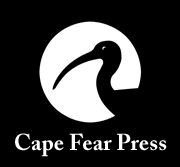 | ||||||||||||||||||
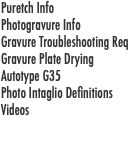 | 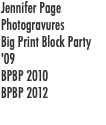 |  | ||||||||||||||||
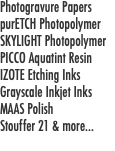 |  |  |  | |||||||||||||||
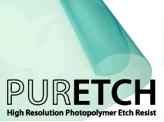 | ||||||||
PURETCH DRY LAMINATION METHOD by Cape Fear Press, Published August 30, 2016© | ||||||||
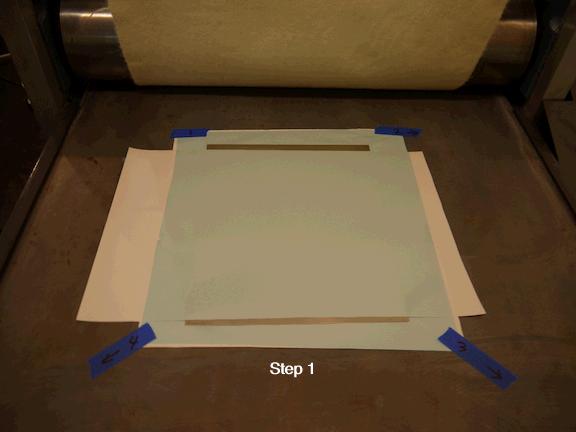 | 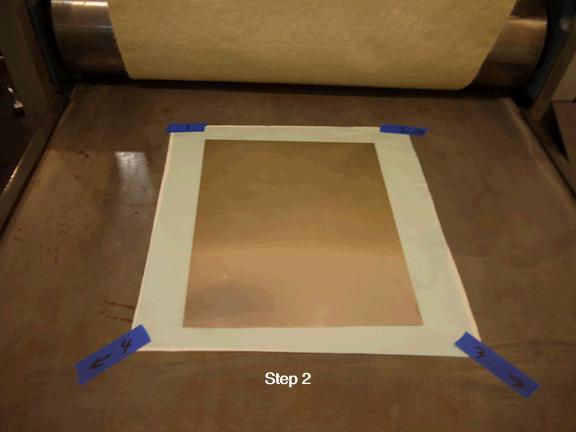 | |||||||
Step 1 Cut a piece of newsprint the same size as Puretch and place it under the plate on the press bed. Next, cut a clean newsprint, glassine or vellum interleaving sheet the same length of the plate to prevent premature adhesion of the film to the copper. I cut it a bit narrower so you can see the layers. Remove inner mylar from Puretch and place it on top. Tape corners to press bed as shown to pull the Puretch film taut and flat. Step 3 Remove the tape from the corners of the film by pulling the tape away from the film surface, not from the press bed. Move the laminated plate to a platform that is slightly smaller than the plate. Slice the film along the plate edges with a sharp blade, angling the blade with any bevels. | ||||
Step 2 Remove interleaving sheet. Make sure plate is beveled if it is a heavy gauge. Place a couple sheets of newsprint or other smooth paper over the film. Run through press twice with slightly less pressure than what you use for printing. | ||||
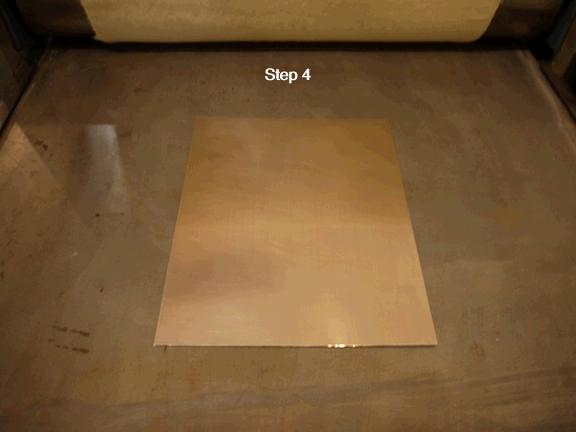 | ||||
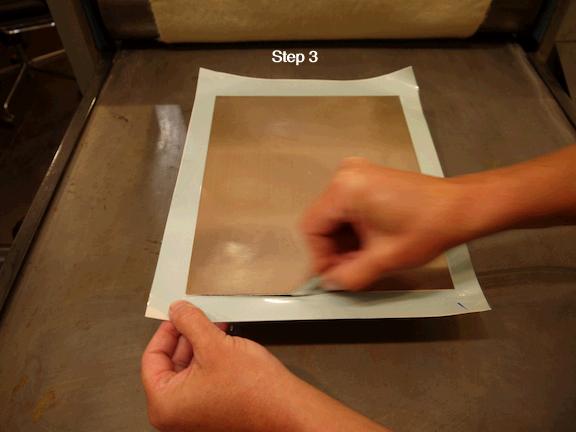 | ||||